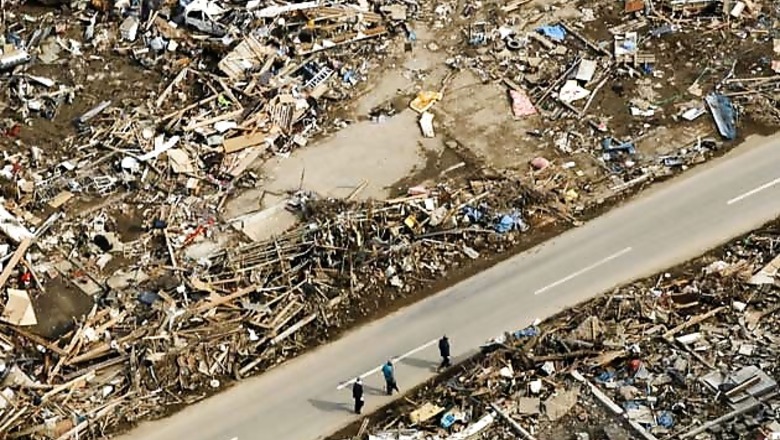
views
Japan successfully launched a new mapping satellite on Saturday that will be used to survey damage from natural disasters and changes affecting rainforests.
The Advanced Land Observing Satellite-2 (ALOS-2) will be able to see scars left by catastrophes such as Japan's 2011 tsunami as well as monitor progress made in reconstruction, officials from the Japan Aerospace Exploration Agency said.
"The satellite was successfully put in orbit," said an official from Mitsubishi Heavy Industries, whose H-IIA rocket was used in the launch from a space centre on the southern island of Tanegashima.
The satellite will provide valuable data for Japan, which sits on the Pacific Ring of Fire and experiences 20 percent of all major earthquakes. Memories are still fresh of the deadly 9.0-magnitude earthquake in March 2011 that unleashed a tsunami that devastated the northern Pacific coast, killing more than 18,000 people and triggering the Fukushima nuclear crisis.
The island nation is also routinely hit by typhoons while scientists say Mount Fuji could erupt at any time. The new satellite, nicknamed "Daichi-2", will "conduct a health check mainly of the Earth's land areas in detail," JAXA project manager Shinichi Suzuki said.
The satellite will collect data related to deformation of the Earth's crust, but also the impact of floods and landslides, he said. The satellite's predecessor was used to monitor damage caused by the 2011 earthquake and tsunami.
The device uses a special radar to observe the planet's surface at night, during bad weather and even through vegetation.
JAXA plans to use the new satellite to regularly study tropical rain forests, which are difficult to observe because of the thick clouds that frequently cover them. It will also be used to observe snow and ice conditions in polar areas, officials said.




















Comments
0 comment